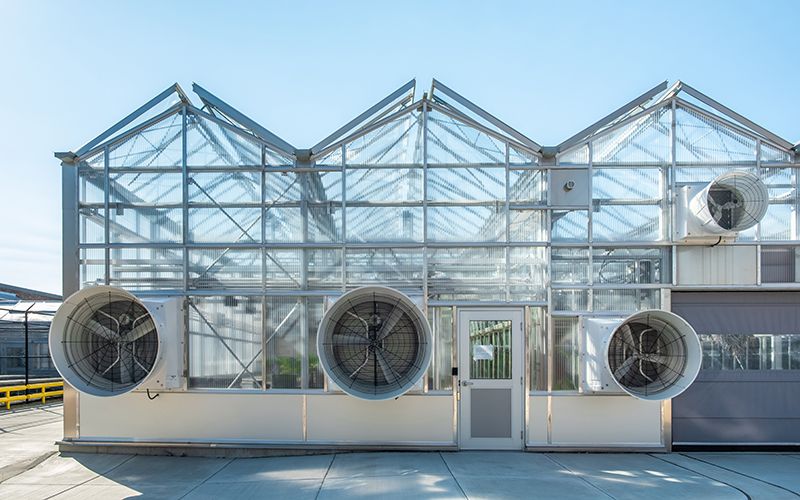
Greenhouse Ventilation: A Key to Year-Round Gardening Success
|
|
Time to read 6 min
 You are being redirected to QC Supply Pharmacy, where you’ll find a wide selection of high-quality prescription and pharmaceutical products for animals of all sizes.
Enjoy the same great service and expertise you trust from QC Supply.
Click below to continue shopping.
Continue
No thanks, stay on the main site
Powered by
You are being redirected to QC Supply Pharmacy, where you’ll find a wide selection of high-quality prescription and pharmaceutical products for animals of all sizes.
Enjoy the same great service and expertise you trust from QC Supply.
Click below to continue shopping.
Continue
No thanks, stay on the main site
Powered by


|
|
Time to read 6 min
Most people understand that a greenhouse not only provides protection from cold and wind, it also provides the heat and light plants require. Even if it’s not insulated, a greenhouse becomes warm by trapping the heat generated by the sun during the day and absorbing it into the ground, warming the air. A greenhouse also serves to protect plants from pests and predators as well as unexpected or extreme weather events. This is a cornerstone of effective greenhouse design and optimal greenhouse ventilation.
For gardeners who face a frustratingly short growing season, a greenhouse is a great way to extend your growing season or grow crops year-round . But a greenhouse isn’t much use—no matter where you live—without a proper ventilation system that allows fresh air to enter, circulate, and exhaust. An efficient ventilation system ensures robust air circulation for healthy plant growth.
While additional equipment such as heaters and grow lights may be necessary for growing plants in cooler climates, all greenhouses, no matter where they’re located, must have a system to move fresh air around.
Why is Greenhouse Ventilation So Important?
If you remember high school Biology class, you may recall that in addition to sunlight, warm air, water, and soil nutrients, plants require carbon dioxide (CO2) in order to photosynthesize and grow. Plants ‘breathe’ by absorbing CO2 and releasing oxygen. Effective greenhouse ventilation not only supports CO2 uptake but also reinforces natural air circulation.
For outdoor gardens, this isn’t an issue since the air normally circulates freely, assuming you haven’t planted your crops too close together. But given its enclosed nature, a greenhouse doesn’t allow for that natural circulation of fresh air, which would lead to ever-decreasing levels of CO2, limiting your plants’ growth. You must provide ventilation to allow your plants to thrive.
In addition to being critical for your plants to grow, fresh, moving air simulates outdoor winds to make plant cell walls stronger resulting in more vigorous plants that produce more fruit. Installing greenhouse fans and an exhaust fan can simulate natural breezes for improved pollination and sturdier plant structures.
Moving air facilitates pollination as well.
An unventilated greenhouse is also naturally prone to overheating which is not good for your plants, which are happiest in environments where the ambient air temperature is between 60° and 75° Fahrenheit. Most plants get stressed and can die when it’s too hot. Temperatures in a greenhouse can soar to sweltering levels during the day in a sunny climate, even in winter, without outdoor ventilation and mechanical air circulation. Using an exhaust fan helps prevent overheating by maintaining effective humidity control and temperature balance.
Finally, a major reason for installing vents and fans is to control unnaturally high humidity levels in the greenhouse which can be detrimental to your plants’ health. Moisture builds up in the greenhouse when there are wide swings in the daytime and nighttime outdoor temperatures—common in spring and fall—or when there’s a disparity between indoor and outdoor temperatures, as in winter.
This moisture, in particular, can build up on the ceiling of the greenhouse and persistently drip down on the plants. Wet foliage, which doesn’t have an opportunity to dry out, is a magnet for mildew, fungi, and pests. Implementing proper humidity control is among the top gardening tips for greenhouse care.
A properly ventilated greenhouse starts with a system of sidewall (base) vents that draw in the fresh air in addition to vents positioned high on the walls near the ceiling or on the roof (ridge vents) that expel hot, humid air. In order to size these roof vents properly, you must calculate the floor area. A rule-of-thumb is the total combined ridge vent area and the total combined sidewall vent area should each be around 20% of the floor area.
So, if your greenhouse is 10 feet wide x 20 feet long, for example, that would make the floor area 200 square feet. 20% of 200 feet is 40 feet. Your greenhouse should have a total ridge vent and a total sidewall vent area of 40 feet each.
If positioned properly, this system of vents can go a long way toward providing a passive system for fresh air circulation, but adding vented exhaust fans will probably still be necessary, particularly if you plan on using the greenhouse during warm months. If that is the case, you will need a more robust, thermostatically-controlled, multi-speed fan system in order to mitigate heat and humidity.
Fans are rated in terms of how many cubic feet of air they move per minute. To figure out how many and what size fans you need to circulate air in your greenhouse, you must first calculate its volume, in terms of cubic feet. This calculation is length times width times height (L x W x H). The height measurement can be tricky if your greenhouse has a pitched roof, as is commonplace, so you may need to estimate that measurement.
Using the example of our 10-foot-wide x 20-foot-long greenhouse, which has a 10-foot (or thereabouts) ceiling, we can calculate its volume as 10 x 20 x 10 = 2000 cubic feet.
Another piece of important information is how much air must circulate in your greenhouse, for best results, and that depends on how warm it is outside. The rule of thumb for the rate of air circulation during the summer months is at least one air change per minute. In the case of the greenhouse example used above, you would need a fan with a rating of 2000 cubic feet per minute or greater.
Energy can also be saved by using larger fans with smaller motors. For example, a 36" diameter fan with a 1/3 horsepower motor will give the same output as a 30" fan with a ½ horsepower motor with a saving in electricity of 180 watts/hr. Reduce summer fan operation time by applying shading to the outside of the greenhouse.
To ensure proper air circulation, it is recommended to position an exhaust fan near the upper part of the greenhouse, on the opposite side of the base vents. This arrangement takes advantage of the fact that warm air tends to rise, promoting efficient airflow throughout the greenhouse. A shutter fan allows you to close it when the fan isn’t running to conserve heat, as necessary.
In addition to the intake and exhaust vents, oscillating fans can be used throughout the greenhouse to allow for maximum air circulation among your plants.
In winter months, outside ventilation isn’t so important for temperature control—when in fact supplemental heaters may be necessary—but is critical for controlling humidity levels. Humidity is a problem in winter particularly because the imbalance between indoor and outdoor temperatures creates damaging moisture buildup as we described above.
To address this problem, you must calculate a rate of ventilation that will remove excess humidity but keep temperatures in balance to minimize heating requirements. In this case, the rule of thumb is three air changes per hour (or one air change every 20 minutes).
Ventilation rates for spring and fall will be somewhere in between the summer and winter rates described above, depending on your climate.
Greenhouses can be game-changers for gardeners, particularly those of us who live in the northern half of the country with a frustratingly short growing season. But just having a greenhouse won’t guarantee that your plants will thrive; you must ensure they have a healthy growing environment with plenty of fresh air circulation in addition to their other, more obvious essentials for growth.
Do you do anything special with vents and fans in your greenhouse to ensure maximum air circulation? If you have additional comments or questions, leave them below, or give us a call at 888.433.5275.